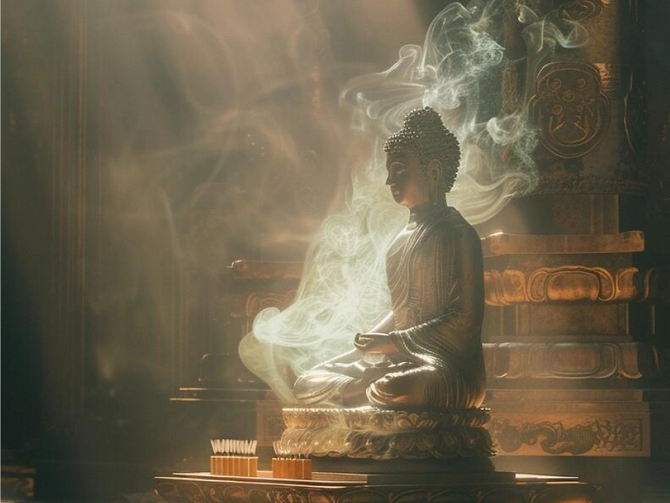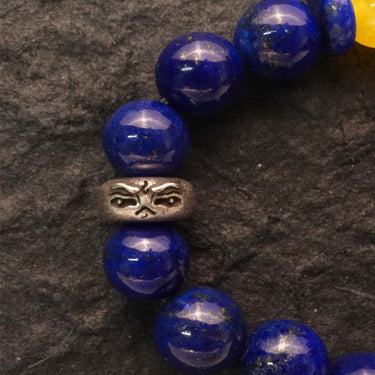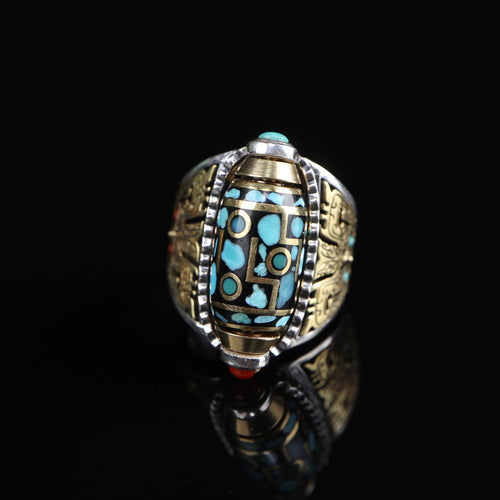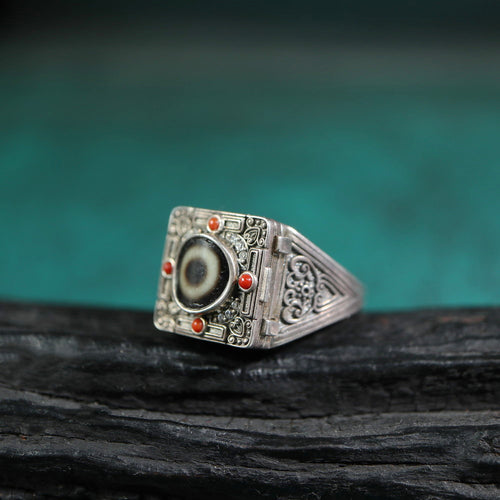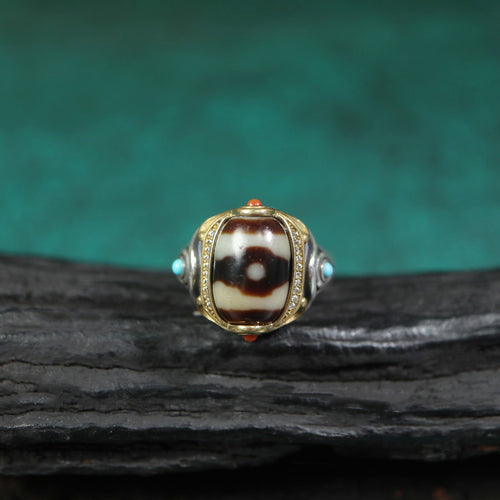
Chinese culture is rich in symbolism, and few creatures hold as much significance as the turtle. Known for its longevity, wisdom, and resilience, the turtle has been a revered and cherished symbol in Chinese art and folklore for thousands of years. At Oriental Aesthetics, we deeply appreciate and celebrate the evolution of the turtle's symbolism, which has endured from ancient times to the present day.
The Turtle as a Symbol of Longevity and Wisdom
The turtle's association with longevity and wisdom runs deep within the fabric of Chinese culture. In ancient Chinese mythology and folklore, the turtle is believed to possess the secrets of the universe on its shell, making it a powerful symbol of cosmic order and profound wisdom. Its intricate patterns and markings on the shell have inspired artists and scholars alike, representing the interconnectedness of all things in the universe.
In Chinese art, the turtle is often depicted alongside symbols of longevity, such as the crane and pine tree. These compositions convey the wish for a long and prosperous life filled with wisdom and good fortune. The turtle's slow and deliberate movements remind us to approach life with patience and contemplation, seeking wisdom through experience and the passage of time.
The concept of longevity is deeply ingrained in Chinese culture, and the turtle's association with this attribute resonates with people of all ages. The turtle's ability to live for an exceptionally long time, sometimes reaching well over a hundred years, has made it an emblem of longevity and a source of inspiration for those seeking to lead a full and meaningful life.
Moreover, the turtle's wisdom is revered in Chinese philosophy. It is believed that the turtle's longevity is a result of its deep understanding of the natural rhythms and cycles of life. By observing the turtle's unhurried and deliberate movements, one can learn the importance of patience, introspection, and embracing the wisdom gained through the passage of time.
In classical Chinese literature, the turtle often appears as a wise and venerable character, offering sage advice and imparting profound teachings. Its association with wisdom extends beyond the realm of mythology and art, finding its way into everyday idioms and proverbs. For example, the phrase "as knowledgeable as a turtle" is used to describe someone who possesses great wisdom and sage-like qualities.
The turtle's symbolism as a representation of longevity and wisdom continues to be celebrated in contemporary Chinese art. Artists draw inspiration from traditional symbolism while infusing their works with a modern touch. Through their artistic expressions, they seek to capture the essence of the turtle's enduring significance in Chinese culture and convey its timeless wisdom to a new generation.
The Turtle as a Symbol of Protection and Stability
Another significant aspect of the turtle's symbolism in Chinese culture is its association with protection and stability. The turtle's sturdy shell serves as a shield against external threats, symbolizing the need for stability and protection in one's life. In ancient times, turtle-shaped amulets were worn as protective charms, believed to ward off evil spirits and bring good luck.
Moreover, the turtle's ability to carry its home on its back represents the importance of creating a secure and stable environment. This aspect of the turtle's symbolism is often depicted in Chinese landscape paintings, where the turtle is shown resting peacefully by a tranquil pond or nestled among rocks and foliage. Such artworks evoke a sense of harmony and stability, reminding viewers of the need to cultivate a peaceful and balanced existence.
The Turtle as a Symbol of Endurance and Adaptability
The turtle's resilience and adaptability are traits that have resonated with the Chinese people throughout history. Its ability to survive for long periods, even in challenging conditions, has made it a symbol of endurance and perseverance. In times of adversity, the turtle's example encourages individuals to stay strong, adapt to changing circumstances, and overcome obstacles.
Chinese folklore often portrays the turtle as a creature that can traverse both land and water, symbolizing adaptability and versatility. This aspect of the turtle's symbolism has inspired artists and poets to explore the theme of resilience and the ability to navigate life's challenges with grace and determination.
The Turtle's Symbolism in Contemporary Chinese Art
The turtle's symbolism in Chinese culture transcends the boundaries of time, resonating even in contemporary Chinese art. Today, artists continue to draw inspiration from the turtle's rich symbolism, infusing it with modern elements and perspectives to create thought-provoking and visually captivating artworks.
Contemporary Chinese artists explore the turtle's symbolism through various artistic mediums, including painting, sculpture, and mixed media. They reinterpret and reimagine the traditional turtle motif, incorporating their unique artistic styles and personal experiences into their creations. Through their innovative approaches, they breathe new life into the ancient symbolism, allowing it to evolve and adapt to the contemporary world.
Some artists utilize the turtle as a metaphor for environmental preservation and sustainability. In an era marked by growing concerns about climate change and the need for ecological balance, the turtle's ability to adapt and survive resonates deeply. Through their artworks, these artists raise awareness about the importance of protecting our natural world and inspire viewers to take action.
Others explore the theme of resilience and the ability to navigate life's challenges with grace and determination. The turtle's symbolism as a creature that can traverse both land and water reflects the artist's exploration of adaptability and versatility in the face of adversity. These artworks serve as a source of inspiration, reminding viewers of their own inner strength and the power to overcome obstacles.
Contemporary Chinese art often combines traditional symbolism with modern aesthetics and techniques. The intricate patterns and textures found on the turtle's shell inspire artists to experiment with new materials and forms. Through the use of vibrant colors, bold brushstrokes, and innovative compositions, they create visually striking artworks that captivate the viewer's attention and evoke a sense of wonder.
Moreover, contemporary Chinese artists infuse their works with personal narratives and social commentary. They explore themes of identity, cultural heritage, and societal change, using the turtle's symbolism as a vehicle for expressing their ideas and perspectives. By combining the ancient symbolism of the turtle with contemporary narratives, these artists create a dialogue between tradition and modernity, bridging the gap between the past and the present.
Company Profile: Oriental Aesthetics
At Oriental Aesthetics, we are passionate about classical oriental art and committed to providing systematic, high-quality professional services for oriental artists, collectors, and enthusiasts. Our platform serves as a hub for appreciating and acquiring remarkable artworks that embody the rich symbolism and cultural heritage of Chinese art.
We curate a diverse collection of classical oriental art, including paintings, calligraphy, sculptures, and more. By collaborating with talented artists and showcasing their exceptional craftsmanship, we aim to promote a deeper understanding and appreciation of Chinese art and its profound symbolism, including the evolution of the turtle's significance.
With a team of experts in oriental art, we offer comprehensive services tailored to the needs of artists and collectors. From art consultations and appraisals to exhibitions and acquisitions, we ensure a seamless and enriching experience for all our clients. Our commitment to excellence and our dedication to preserving and promoting classical oriental art set us apart as a trusted and leading institution in the field.
Conclusion
The turtle's symbolism in Chinese culture has evolved over centuries, embodying concepts of longevity, wisdom, protection, stability, endurance, and adaptability. From ancient mythology to contemporary art, the turtle continues to captivate and inspire artists, scholars, and enthusiasts alike. At Oriental Aesthetics, we invite you to explore the profound symbolism of the turtle and immerse yourself in the rich tapestry of classical oriental art. Discover the beauty, wisdom, and enduring significance thatthe turtle symbolizes through our carefully curated collection and professional services.



